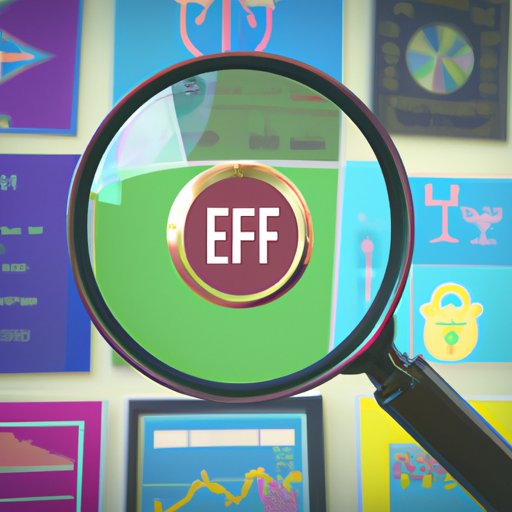The Rise of Crypto Economy Drives Defi Sector to Surpass $100 Billion TVL
March 14, 2024 | by stockcoin.net

The soaring popularity of cryptocurrencies and the unprecedented growth of the crypto economy have propelled the decentralized finance (DeFi) sector to surpass an astounding $100 billion Total Value Locked (TVL). This significant milestone represents a paradigm shift in the financial landscape as more individuals and institutions recognize the potential of DeFi protocols and their ability to provide decentralized financial services to a global audience. With the increasing adoption of cryptocurrencies and the growing demand for DeFi applications, the sector shows no signs of slowing down, solidifying its position as a key player in the future of finance.
The Rise of Crypto Economy
The rise of the crypto economy has been gaining significant momentum in recent years. Cryptocurrencies, such as Bitcoin and Ethereum, have seen increased adoption and acceptance from mainstream users and institutions alike. This growing interest in digital assets and their underlying technology, blockchain, has paved the way for the expansion of the decentralized finance (DeFi) sector.
Increased adoption of cryptocurrencies
One of the driving factors behind the rise of the crypto economy is the increased adoption of cryptocurrencies. In the early days, Bitcoin was primarily associated with illegal activities and was shunned by mainstream users. However, as more people recognized the potential of cryptocurrencies, they started to embrace them as an alternative form of currency and store of value. This growing acceptance has led to the wider use of cryptocurrencies in various sectors, including e-commerce, travel, and even traditional finance.
Growing interest in blockchain technology
Another factor contributing to the rise of the crypto economy is the growing interest in blockchain technology. Blockchain, the decentralized and transparent ledger that underlies cryptocurrencies, has applications beyond just digital currencies. Industries such as supply chain management, healthcare, and voting systems are exploring the potential of blockchain to enhance their operations, improve transparency, and streamline processes. The increased interest in blockchain technology has also led to a surge in investment and innovation in the DeFi sector.
Expansion of the decentralized finance (DeFi) sector
The expansion of the DeFi sector has been one of the most significant developments in the crypto economy in recent years. DeFi refers to financial applications and platforms that are built on blockchain technology and operate without intermediaries, such as banks or brokers. These decentralized platforms enable users to engage in a range of financial activities, including lending, borrowing, trading, and earning interest on their digital assets.
Driving Factors for DeFi Sector
Several driving factors have contributed to the rapid growth and popularity of the DeFi sector.
Decentralization and trustlessness
One of the key driving factors for the DeFi sector is the concept of decentralization and trustlessness. Traditional financial systems rely on centralized intermediaries, such as banks, to facilitate transactions and ensure trust among parties. However, these intermediaries often come with limitations and fees. DeFi platforms eliminate the need for intermediaries by leveraging blockchain technology, allowing users to transact directly with each other in a trustless manner. This decentralization not only reduces costs but also enhances transparency and security.
Lack of financial intermediaries
The DeFi sector has gained traction because it offers an alternative to traditional financial intermediaries. In traditional finance, intermediaries play a crucial role in providing banking services, such as lending, borrowing, and investment management. However, these intermediaries often have strict requirements and fees that can be barriers to entry for many individuals. DeFi platforms enable anyone with an internet connection to access financial services, bypassing the need for intermediaries and reducing barriers to entry.
High potential returns
One of the most attractive aspects of the DeFi sector is the potential for high returns on investments. Many DeFi platforms offer users the opportunity to earn interest on their digital assets, provide liquidity to decentralized exchanges, or participate in yield farming. These activities can generate significant returns compared to traditional savings accounts or investments. This potential for high returns has attracted investors and traders to the DeFi sector, contributing to its rapid growth.
Understanding TVL
To comprehend the growth of the DeFi sector, it is essential to understand the concept of Total Value Locked (TVL).
Total Value Locked (TVL) in DeFi
TVL refers to the total value of assets, usually in the form of cryptocurrencies, locked or deposited in DeFi protocols and smart contracts. It measures the amount of capital that participants have invested or committed to the DeFi sector. TVL serves as a metric to gauge the growth and activity within the DeFi ecosystem and provides insights into the size and potential of the sector.
Importance of TVL in measuring sector growth
TVL plays a crucial role in measuring the growth and success of the DeFi sector. As more assets are locked in DeFi protocols, it indicates both increased confidence and increased usage of decentralized financial applications. TVL provides a tangible metric that can be used to compare the growth of different DeFi platforms and assess their popularity and adoption. Additionally, TVL can also be an indicator of the overall health and stability of the DeFi sector.
DeFi Sector’s Growth
The DeFi sector has witnessed exponential growth in recent years, surpassing significant milestones along the way.
Exponential increase in TVL
The growth of the DeFi sector is evident in the exponential increase in TVL. In a relatively short period, the amount of capital locked in DeFi protocols has grown significantly. This growth can be attributed to the rising popularity of DeFi platforms and the increasing number of users participating in decentralized financial activities. As more users recognize the potential of DeFi and seek to benefit from its advantages, the TVL continues to surge.
Surpassing the $100 billion milestone
A significant milestone for the DeFi sector was the surpassing of the $100 billion TVL mark. This achievement highlighted the rapid expansion and adoption of DeFi platforms. The milestone also demonstrated the scaling potential of the sector and its ability to attract substantial investments and user participation. Surpassing this milestone further solidifies the position of DeFi as a viable and valuable alternative to traditional financial systems.
Comparisons with traditional financial institutions
The growth of the DeFi sector has also sparked comparisons with traditional financial institutions. While still relatively small compared to the global financial system, the DeFi sector’s growth rate and potential have captured the attention of industry experts and investors. Some even envision a future where DeFi could disrupt and transform traditional financial intermediaries by offering more efficient, accessible, and inclusive financial services.
Key Players in the DeFi Space
The DeFi sector is composed of various key players, each contributing to its growth and development.
Popular decentralized exchanges (DEXs)
Decentralized exchanges, or DEXs, are a significant component of the DeFi ecosystem. These platforms enable users to trade digital assets directly with each other without the need for intermediaries. Popular DEXs such as Uniswap and SushiSwap have gained substantial user bases and transaction volumes, providing liquidity and facilitating trading activities in the DeFi space. DEXs offer users greater control, privacy, and lower fees compared to centralized exchanges.
Lending and borrowing platforms
Lending and borrowing platforms have emerged as essential players in the DeFi sector. These platforms allow users to lend their digital assets and earn interest on their holdings or borrow assets by using their existing holdings as collateral. Platforms like Compound, Aave, and MakerDAO have attracted significant attention and investments by offering borrowers access to collateralized loans and lenders the ability to earn interest on their holdings. These platforms contribute to the liquidity and growth of the DeFi ecosystem.
Stablecoins and decentralized stablecoin protocols
Stablecoins play a crucial role in the DeFi sector by providing price stability and facilitating various financial activities. Stablecoins are cryptocurrencies that are pegged to a stable asset, such as a fiat currency or a commodity. They eliminate the volatility associated with many cryptocurrencies, making them suitable for use in decentralized lending, trading, and other financial applications. Popular stablecoins like Tether and USD Coin have become integral to DeFi platforms, while decentralized stablecoin protocols like MakerDAO’s DAI offer decentralized alternatives to traditional stablecoins.
Factors Contributing to the Growth
Several factors have contributed to the significant growth and expansion of the DeFi sector.
Increase in decentralized exchanges and liquidity
The proliferation of decentralized exchanges and the increase in liquidity have played a vital role in the growth of the DeFi sector. As more users seek alternatives to centralized exchanges, decentralized exchanges have gained popularity due to their ability to provide greater control, privacy, and lower fees. The availability of liquidity on these platforms has also attracted traders and investors, enabling them to execute trades seamlessly and efficiently.
Expanding use cases for DeFi
The expanding use cases for DeFi have also contributed to its growth. Initially, DeFi was primarily associated with lending and borrowing activities. However, the sector has evolved to include a wide range of financial services, such as decentralized insurance, prediction markets, asset management, and even synthetic assets. This diversification of use cases has attracted a broader user base and increased engagement within the DeFi ecosystem.
Integration with other blockchain ecosystems
The integration of DeFi with other blockchain ecosystems has fostered the sector’s growth and potential. As interoperability between different blockchains improves, users can leverage the advantages of various blockchain networks and access DeFi services more seamlessly. Integrations with popular blockchain platforms like Ethereum and Binance Smart Chain have facilitated the cross-pollination of users and assets, expanding the reach and impact of the DeFi sector.
Regulatory Challenges and Future Outlook
Despite its rapid growth and potential, the DeFi sector faces regulatory challenges that could shape its future trajectory.
Regulatory uncertainties for DeFi platforms
The decentralized and borderless nature of DeFi platforms presents challenges for regulators seeking to apply traditional regulatory frameworks. Regulatory uncertainties surrounding issues such as investor protection, anti-money laundering measures, and compliance requirements pose challenges for DeFi platforms and provoke debates about the appropriate regulatory approach. Striking the right balance between innovation and protection is essential for the sustainable growth of the DeFi sector.
Importance of regulatory clarity for sustainable growth
Regulatory clarity is crucial for the long-term growth and stability of the DeFi sector. Clear and transparent regulations can provide certainty for developers, investors, and users, fostering trust and confidence in the ecosystem. Regulatory frameworks that prioritize consumer protection, data privacy, and financial stability can help weed out bad actors, mitigate risks, and ensure the overall health of the DeFi sector.
Expectations for the future of the DeFi sector
Despite the regulatory challenges, the future of the DeFi sector appears promising. The continued growth of the crypto economy, coupled with increasing interest in DeFi applications, is likely to fuel further innovation and development in the sector. As the technology matures, scalability improves, and regulatory frameworks become more defined, the DeFi sector has the potential to transform the global financial system, providing accessible and inclusive financial services to underserved populations worldwide.
Risks and Concerns in the DeFi Sector
While the DeFi sector offers numerous opportunities, it is not without risks and concerns that stakeholders should be aware of.
Smart contract vulnerabilities
Smart contracts, which underpin many DeFi protocols, are not immune to vulnerabilities. Even the most audited and seemingly secure smart contracts can be susceptible to coding errors or exploitable loopholes. These vulnerabilities can lead to bugs, hacks, and potential loss of funds. It is crucial for developers and users to conduct thorough audits and due diligence when using DeFi platforms to mitigate these risks.
Impermanent loss in liquidity pools
Liquidity providers in decentralized exchanges face the risk of impermanent loss. Impermanent loss occurs when the price of an asset diverges significantly from its initial price at the time of providing liquidity. The loss becomes permanent if the liquidity provider decides to withdraw their assets when the prices have diverged. While impermanent loss can be mitigated through careful selection of assets and trading strategies, it remains an inherent risk in participating in liquidity pools.
Lack of investor protection
Unlike traditional financial systems, the DeFi sector does not provide the same level of investor protection. The absence of regulatory oversight and centralized intermediaries means that investors are solely responsible for conducting their due diligence and managing their risks. This lack of investor protection exposes participants to potential scams, rug pulls, or technical failures, underscoring the importance of education, research, and risk management in DeFi investments.
Impact on Traditional Finance
The growth of the DeFi sector has the potential to disrupt traditional financial systems and reshape the global financial landscape.
Disrupting traditional financial intermediaries
As the DeFi sector continues to grow and mature, it poses a threat to traditional financial intermediaries, such as banks and brokers. By eliminating the need for intermediaries, DeFi platforms offer greater efficiency, lower costs, and increased accessibility for financial services. Traditional financial institutions may need to adapt and embrace blockchain technology to remain competitive in a rapidly evolving landscape.
Inclusion of underserved populations
One of the significant advantages of DeFi is its ability to include underserved populations who may have limited access to traditional financial services. With internet connectivity and a compatible device, individuals from anywhere in the world can access DeFi platforms and participate in financial activities. This inclusivity has the potential to empower individuals, particularly those in developing countries, by allowing them to access capital and engage in economic activities previously out of reach.
Evolving financial landscape
The rise of the DeFi sector signifies a shift toward a more decentralized and democratized financial landscape. DeFi platforms are challenging the dominance of traditional financial systems, fostering innovation, and offering alternatives to legacy financial products and services. The evolving landscape presents both opportunities and challenges for individuals, institutions, and regulators as they navigate the complexities and potential benefits of this transformative sector.
Conclusion
The rise of the crypto economy has fueled the growth and expansion of the decentralized finance (DeFi) sector in recent years. Increased adoption of cryptocurrencies, growing interest in blockchain technology, and the rise of decentralized financial applications have all contributed to this growth. The DeFi sector’s significant milestones, exponential increase in Total Value Locked (TVL), and the emergence of key players demonstrate the sector’s potential and value. However, challenges such as regulatory uncertainties, risks associated with smart contracts, and the lack of investor protection must be addressed. Despite these challenges, the DeFi sector is poised to continue its growth, presenting opportunities for innovation, inclusion, and the transformation of the global financial system.

RELATED POSTS
View all





